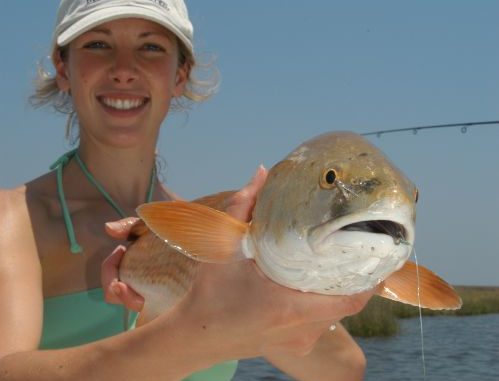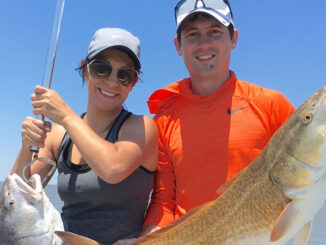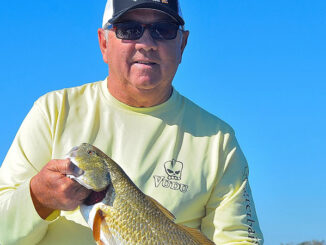
Carolina-rigged cracked crab a great way to get bit, guide says
When Thibodaux’s Travis Lovell points the bow of his boat to Grand Pass in July, he knows he’ll catch black drum or redfish there, which is why he likes to call it Fishin’ Roulette in Grand Pass.
Is it red or black?
Grand Pass, a hotspot for reds and drums, is a typical destination for many people this month. Located along Bayou Dularge near the coast of South-central Louisiana, it is a large four-way intersection that separates Lake Mechant to the west and Caillou Lake (better known as Sister Lake) to the east.
Redfish, including beau coup bulls, and black drum of all sizes roam the oyster-laden bottom, which can be as deep as 50 feet in places.
It is a special place for Lovell, an eight-year veteran charter boat captain who owns Reelin Good Charters.
“Grand Pass — hey, it’s good in July,” he said. “I’ve been fishing it 30 years. I actually caught my first redfish there 30 years ago.”
Lovell was fishing with his grandfather, the late Albert “A.J.” Mire, when he caught that red, and he still feels a close affinity for the hotspot.
But it’s not secret.
“Obviously, finding a place depends on other fishermen,” Lovell said. “It’s big enough where you can catch a lot of big fish (even) with a lot of boats.
“I usually fish based on the tide. If it’s falling, I go on the south side. If it’s coming in, I fish on the north side. That’s not to say you couldn’t catch fish on the south side on an incoming tide.”
Usually, water in the pass is a bit stained, Lovell said that shouldn’t stop you from fishing.
“Redfish and drum have a great sense of smell,” he said. “Water clarity’s not a huge factor.”
He catches fish on Carolina-rigged cracked or whole blue crab impaled on a 5/0 or 6/0 Kahle hook tied to a 2-foot long leader under a 2- or 3-ounce egg sinker weight.
Most of the time, he fishes 15- to 25-foot depths, he said.
“I’ll fish that ledge,” Lovell said.
The average size of Grand Pass redfish is 25 pounds, while drum go from 4 pounds to 45 pounds. The smaller drum are best for eating purposes.
“I typically release the big black drum to eat another day,” Lovell said, noting he keeps them between 16 and 24 inches.


